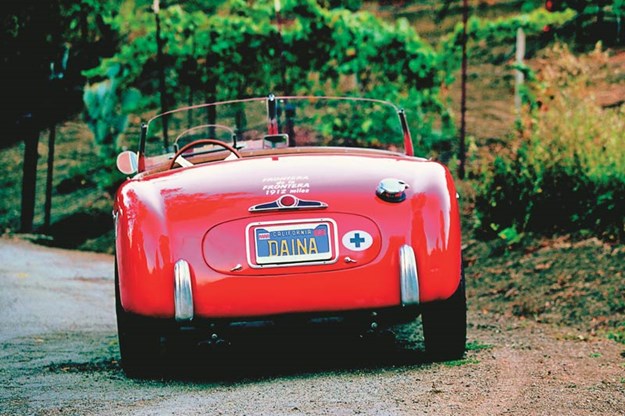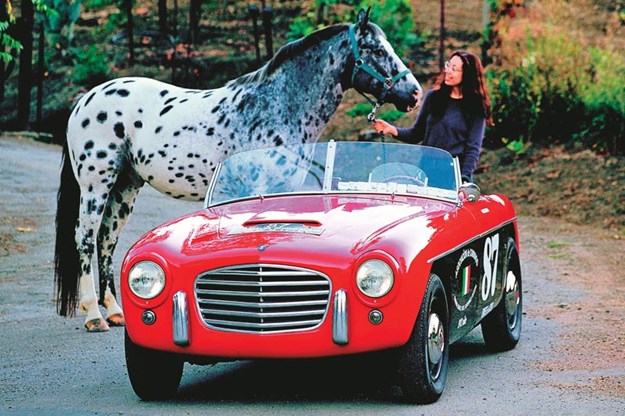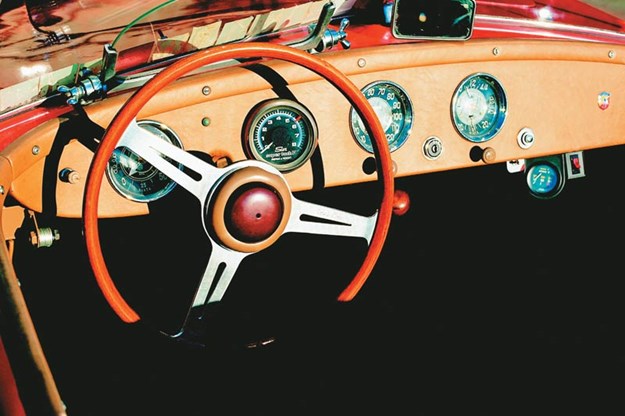Bygone Brands: Siata













|

|

|

|

|

|
It's a familiar story of boom and bust for this quirky Italian car-maker which produced some stunning cars before calling it quits
From Unique Cars #288, Jul/Aug 2008
Siata
Fortunately for race circuit commentators on several continents, Giorgio Ambrosini knew the value of an acronym well before his products found fame in the motorsporting world. In 1926 when this talented engineer established an automotive parts business, he named the organisation ‘Societa Italiana Auto Transformazione Automobilistiche’ – shortened gratifyingly to S.I.A.T.A.
In common with fellow tuning whiz and future collaborator Carlo Abarth, Ambrosini’s stock-in-trade was performance parts for underperforming Fiats. Its most successful products included an overhead valve cylinder head and supercharger that helped extract 40 percent more power from the 1.0-litre Ballila engine and a kit that boosted Topolino top speed to over 100km/h.
By the late-1930s, Giorgio Ambrosini and son Renato were dabbling in car manufacturing. Their first efforts were predictably based on Fiat chassis and with engines enhanced by their own tuning aids and bubble-like coupe bodies. In 1937 came a Spider with 500cc Fiat power and sleek bodywork by Zagato. War interrupted the project but gave the Ambrosinis time to plan for a post-conflict range of sports and competition cars. However, after the factory was destroyed by Allied bombers in 1943, the only thing Siata was geared to make immediately after Italy’s liberation was Moped engines.
| Bygone brands: Giocattolo

Two years later the company roared back into automotive manufacturing at a frenetic pace. Virtually every coachbuilder in Italy was contracted to produce body designs for a Siata range that had, by 1950, grown to almost embarrassing proportions.
Its first post-WWII product was a strange three-seat device with central driving position and a rear-mounted 750cc alloy engine of Siata’s own design. A handful was reportedly produced but it seems that none survive.
More successful was a front-engined design that revived the pre-War ‘Amica’ model name. This spaceframed sports car was designed in-house by Siata and the bodies produced by Bertone.
Considering the radical shapes it had previously entertained, Siata’s first tilt at serious manufacturing was conservative in both appearance and design; powered by a 16kW Fiat 500C engine or Siata’s own unit with just 3kW more.
| Bygone brands: Marcos

The Daina range that arrived in 1950 was larger and entirely more sophisticated than any previous Siata. Based around the engine and chassis of Fiat’s lumbering 1400 sedan, this series included two-seat fastback coupes, convertibles and even a low production station wagon.
With 50kW and a five-speed gearbox, 1400 Spiders offered a 138km/h top speed and survived until 1958. Some Siatas built during the 1950s were produced using the engine from the failed Crosley ‘compact’ car and at least one was adapted to house a Chrysler Hemi V8.
| Bygone Brands: Apollo
However, it was an eight-cylinder engine designed to power a never-built luxury Fiat that elevated Siata to the lofty heights of 1950s supercardom. Fiat’s 8V engine – so called because Fiat wanted to avoid conflict with Ford over its designation – was announced at the 1952 Turin Motor Show. However, Siata had been aware of its existence and followed immediately with its own platform for the ‘narrow vee’ engine.
Although fewer than 60 Siata S208s were built in the space of three years, they came in a profusion of body designs. At least three of Italy’s lesser-known houses built coupe and open-top versions, while Bertone produced a handful of conservatively-styled sports sedans.

Popularity in the US market played a major role in Siata’s success. Distributors covering the East and West Coasts were appointed; Tony Pompeo in New York and Ernie McAfee in Los Angeles. In 1953, McAfee entered a Siata in the rugged Panamericana road race but it crashed shortly after the start. In 1954, Siata embarked on another ill-advised and cash-sapping project. The Mitzi was a two-seat microcar and weighed only 419kg. It was built in Argentina as the Rycsa Mitzi B40, using a twin-cylinder Vespa engine.
As the ’60s approached, Siata’s fortunes continued to sag. There had been no new models since the short-lived 208 and sales of four-cylinder Dainas slowed as more modern opponents reached the market.
Siata amalgamated with Abarth in 1959 but this did little to keep the business alive until it could be reconstituted in 1961 as Siata Auto Turin upon which the company began development work on a new TS model.

Based on Fiat’s 1500 sedan, the TS had styling by Michelotti but could have served as a downsized prototype for the Frua-bodied Maserati Quattroporte. The car was built in Italy and at Fiat’s Heilbronn factory in West Germany. In 1964 the design was upgraded to incorporate a larger air intake and single, rectangular headlights.
Siata’s final product was its most derided but also the brand’s only commercial success. The 1967-release Spring was a strange-looking device, incorporating elements of early-’50s MG and an ironing board in its design. Its engine came from the Fiat 850 and top speed was a claimed 125km/h. The Spring was priced at US$1995 and extremely popular in the US. Sales during three years of production totalled 3500 but a long-running strike at the Italian factory forced Renato Ambrosini to sell production rights to the Spring and abandon the motor industry.
Owner - Robert Williams
Robert Williams’ Siata Daina Spider is anything but a museum piece. As evidenced by the scrutineering stickers on its windscreen, the car regularly appears in North American historic events and is decorated in the style of a Carrera Panamericana road race.
The car was delivered in 1952 and is possibly the Siata that finished third in that year’s Sebring 24-Hour race. It was located by Williams on an Atlanta used car lot in 1964 and resold by him in 1973.

The buyer restored the car and seven years later offered it again to Williams. Since that time it has competed at many prestigious events and had its original 1.5-litre engine replaced by a later, more vigorous Fiat motor.
However, Williams believes that it was brakes rather than brake horsepower that brought Siata its competitive edge.
"The brakes are finned aluminium drums and massive for a car of 880kg," he said. "If I held the brake shoes against those from a more modern car they would be twice the width and twice as thick."
Unique Cars magazine Value Guides
Sell your car for free right here
Get your monthly fix of news, reviews and stories on the greatest cars and minds in the automotive world.
Subscribe

.jpg)














